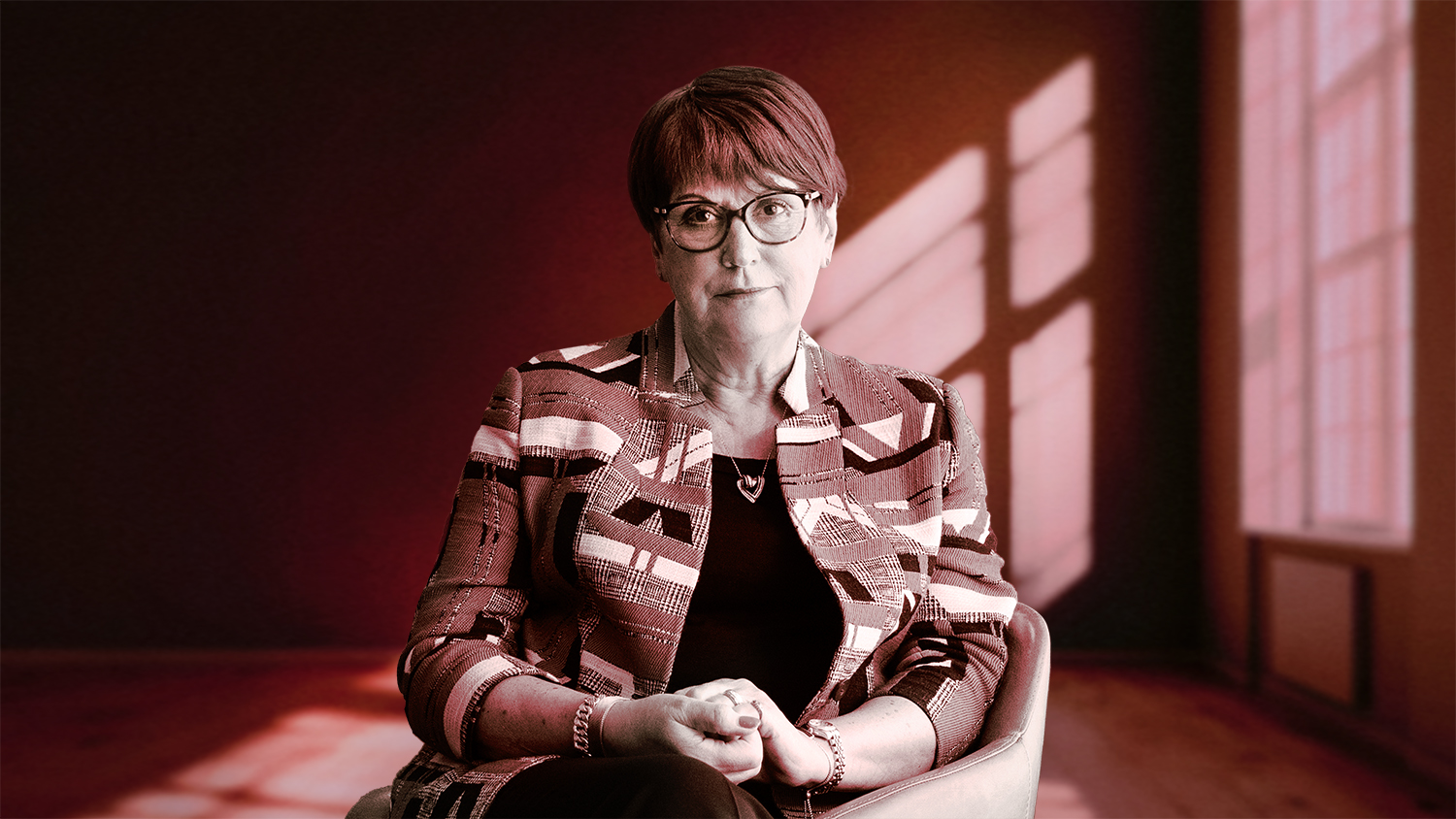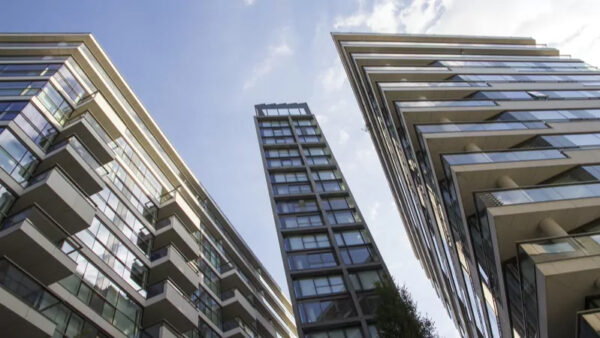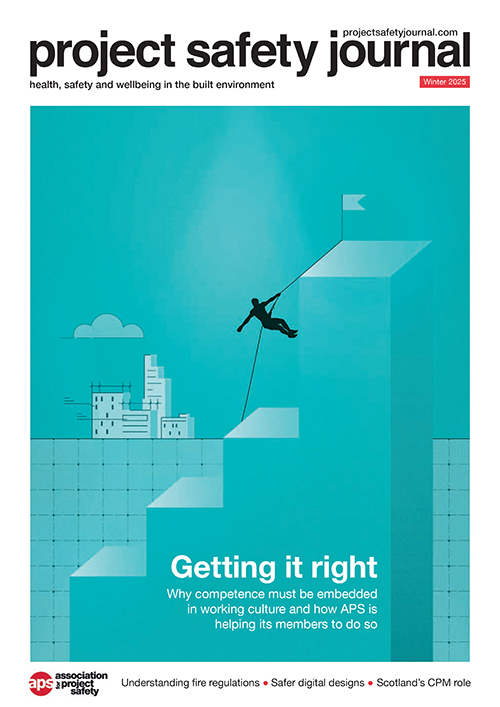
Despite the safety reforms brought in by the 2022 Building Safety Act, substandard submissions are still holding up approvals by the Building Safety Regulator. Dame Judith Hackitt tells Denise Chevin what needs to be done to transform the construction culture that allows this.
When Dame Judith Hackitt delivered the CIOB Sir James Wates lecture to an invited audience in late November last year, industry disquiet about the new Building Safety Regulator (BSR) was rearing its head. Schemes were being routinely held up at Gateway 2, meaning they could not start work on site.
A freedom of information request to the HSE submitted by the Fire Industry Association had revealed that between 1 October 2023 and 16 September 2024 the BSR received 1,018 Gateway 2 applications, of which only 146 were approved, allowing construction to commence.
This equates to an approval rate of approximately 14%, with many rejected due to incompleteness or failure to demonstrate full compliance with building regulations.
Industry reports also indicate that the BSR is experiencing significant delays in processing these applications. Rather than the expected 12 weeks to decide on an application, approvals are often taking much longer.
The BSR said it was responding to the delays. It was increasing its team and working closely with industry to see how it could strengthen its guidance to encourage high-quality applications that fully comply with building regulations.
But while the BSR has been adopting a conciliatory or collaborative tone, Dame Judith herself is having none of it – taking a more robust stance that has been a hallmark of the former chair of the HSE since writing her post-Grenfell report, Building a Safer Future, in 2018.
Substandard submissions
She stated in her lecture that the system was being clogged up with substandard submissions. These were taking up time that was not planned for and not anticipated.
It was yet more evidence that industry was dragging its feet in failing to get ready for the reforms coming their way.
In Hackitt’s view an “appalling attitude continues to prevail”, despite the 2022 Building Safety Act now being in force and the failings of the industry laid bare in the report from the second phase of the Grenfell Inquiry. She was equally emphatic in a follow-up interview with Project Safety Journal at the start of 2025.
Hackitt chairs the Industry Safety Steering Group (ISSG), which meets every three months to review progress on improvements to building safety culture and reports to the secretary of state. At the time of the PSJ interview in January, ISSG had submitted its advice to government on the recommendations of Phase 2 inquiry, saying which should be taken forward.
Though the contents have not been made public, Hackitt let it be known that the ISSG does not support the resurrection of a chief construction adviser or a single, ‘super regulator’ – more of which later. Government has pledged to respond to the Phase 2 inquiry by the end of March.
‘Building Safety Act is the start of the process’
Speaking at the lecture in London, she linked the industry’s slow response in implementing her recommendations to improve the building safety culture with its record on health and safety on site and how slow it had been in that sphere ‘to get it’.
“We can look back to a period prior to the Construction (Design and Management) Regulations, when it was the norm for more than 150 people to lose their lives in this sector every single year. It took a summit back in the early 2000s when John Prescott [then the deputy prime minister] shook the industry out of its presumption that things could not be changed.
“We know that the culture can change and that good performance will follow. Introduction of the Building Safety Act is the start of the process, not the end. Now begins the process of driving the right moral and ethical behaviours alongside complying with these new laws. Compliance is the minimum we require.”
Hackitt said that there were companies who were doing the right thing – making provisions of millions of pounds, as well as changing the way they work. She singled out Persimmon Homes and Clarion Housing Group as exemplars (see below).
She thought, however, that the first prosecution under the act – which she said is only a matter of time – would galvanise more into action.

She went on to tell PSJ: “We’re in a kind of grace period at the moment where people get the benefit of the doubt. They can say they don’t yet know what they are required to do. That’s why you see the regulator erring on the side of being more helpful at this stage in terms of, ‘this is what good looks like’. But there will come a point in the not
too distant future where they will say, ‘You have no excuse anymore’.”
She expected prosecutions to come about through building inspectors spotting the failure to meet compliance. “It’s about people in building control now recognising that they have a different role in this system. When they find things that are of concern to them, that need to be addressing them in the right way and reporting them back up to the building safety regulator.”
What other changes would Dame Judith like to see?
Urgent action on certification of construction products
Dame Judith said that one of her greatest frustrations to date was the lack of progress assuring the quality of construction products – despite a comprehensive report and plan of action by Paul Morrell and Anneliese Day in 2023. She herself had chaired an international panel which pulled together examples of what good practice looks like from around the world and came to very similar conclusions on what was needed.
“The Grenfell inquiry report could not be clearer that this rotten system needs to be fixed and in a robust way. It is long, long overdue, and it is a major weakness in the new system. It’s surprising to me that people in industry are not calling for it, because with the duties that they now have under the Building Safety Act, not being able to assure themselves of the quality of the products they’re using is a major vulnerability for them.”
She added: “What we need is to re-establish trust in the way products are tested, and whether the tests that we conduct are fit for purpose.”
The need for a new safety summit
“One of my personal pleas to the new government in response to the public inquiry will be to seek another summit on the Prescott scale. That marked a turning point on an attitude to health and safety, but this time it needs to be focused on building safety. Real and genuine commitment to being part of leading this new approach should, in my view, be a condition of being involved in building the 1.5 million new homes the government has committed to.”
Meaningful professional development
Hackitt noted that the final report of the public inquiry into the Grenfell Tower fire, published last September, had provided the most chilling accounts yet of the poor behaviour which existed and which contributed to the tragedy.
“At best, people were incompetent, but it is the lack of care and the cynicism demonstrated by some, which really continues to shock. We are also reminded again of what happens when roles and responsibilities become blurred and conflicting interests get in the way.
“Lessons need to be learned by engineers and other professionals on the need for real, meaningful, continued professional development, and for adhering to a high standard of moral and ethical behaviour.”
Demonstration of competence
One of the recommendations of the Grenfell Phase 2 Inquiry was compulsory registration for companies working on higher-risk buildings. Asked about her support for this, she said: “I think there ought to be a threshold of competence for working on complex buildings, and a demonstration of an organisation’s competence, not just the competence of individuals.

A number of professional bodies, including APS, have developed new registers that provide a means for members to certify their competence, but take-up is proving slower than hoped. Hackitt says that this is disappointing.
“That’s all part of the culture change that we need to see: so that leading companies will only engage with people who are registered or who are demonstrably competent, and that will then drive people to register. But it’s a pity that it takes that kind of process to evolve, rather than people seeing the logic of doing it and being proactive.”
Government being more proactive in driving culture change
Hackitt is firmly of the view that alongside new legislation, government could be doing more to drive a culture change through setting the right standards in public procurement. This could include requiring collaborative construction, requiring people to demonstrate competence, and not allowing buildings to be built by people who don’t sign up to the principles and processes that demonstrate they’re doing the right thing.
She said that this should be extended to local authorities as well. While government often said it had no direct control over local authority procurement, Hackitt disagreed, pointing out that government may not hold the purse strings, it sets the policy framework in which local authorities operate.
But no need for a single regulator
Dame Judith said she had serious reservations about setting up a single ‘super regulator’ for construction. This was one of the recommendations in the Grenfell Phase 2 Report that would bring construction regulation – currently fragmented across different departments – under the aegis of a single secretary of state, supported by a chief construction adviser.
Such a move would be a distraction. “It will be used by industry as an excuse for not doing anything while people have a think about yet more structure and so on. What we need right now is focused effort to get BSR properly resourced and working effectively in its domain, and similar focus on creating a robust new regime for product regulation.
“There may be a case at some point in the future for bringing that together, but the logic tells me that it would be better to get them both up and running effectively first, rather than wasting precious time now on form before function.”
In terms of a chief construction adviser, she reiterated that the priority for government ought to be acting as an exemplar with its own directly controlled spend.
And her number one ask?
“I have two. One would be to address the product issue, and the second would be for government itself to show leadership in its own procurement.”
What good leadership looks like
The need for people in the sector to show more leadership has been one of Hackitt’s constant refrains. But what does this look like?
Dame Judith told PSJ: “It is about admitting and acknowledging the mistakes that we make, stopping the denial. Stop saying ‘it wasn’t me. I did nothing wrong. It was someone else’.
“What we need are clients who demand quality and ensure that it gets delivered. And contractors and designers who refuse to bend to pressure when they’re asked to cut corners and cut costs.
“We need site managers who turn away the cheap substitutes and demand what was actually specified, knowing that they will have the backing of their companies and their bosses for doing that.
“In buildings already occupied, we need building safety managers who draw up sensible, prioritised work lists to improve buildings that they’re managing.
That list must prioritise the work to make the most improvement, rather than fixating on doing lots of small things, simply to demonstrate that they’re busy.
“Most importantly of all, we must design in ways which put the safety of users at the heart of the process, which everyone then commits to deliver in full.”
Hackitt said that good practice was already emerging among many companies.
She singled out Persimmon Homes and Clarion Housing Group as exemplars of the sort of leadership she was looking for and where true commitment came from the very top.
She said of Persimmon: “What I’ve actually seen for myself is a genuine root-and-branch review of what they do and how they do it, and serious financial commitment over the long term to address the issue.”
Talking about the need for urgency on changing culture she said: “We really cannot follow the similar path that we went through with health and safety, where it took this industry 30 years to ‘get it’.
“If you don’t seize the opportunity, don’t be surprised when you face more regulation, because that is the recommendation of the inquiry.”












